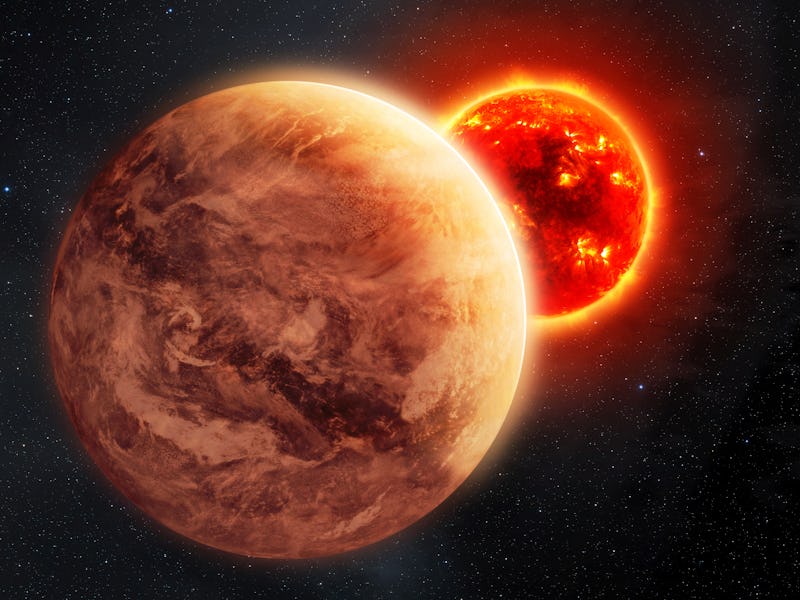Astronomers May Have Just Solved An Enduring Venus Mystery
The origins of its intense volcanism may finally be answered.

With its thick, cloudy atmosphere, Venus has long held mysteries about its surface. It was only in the late 20th century that astronomers had detailed observations of the Venusian landscape, with the Russian Venera landers in the 1970s and 1980s and later the 1990 Magellan mission, which made high-resolution radar maps of the surface. There are many things we still don’t know, but one thing we do know is that the surface of Venus is young. And a new study in Nature Astronomy may know why.
Earth has a young surface thanks to tectonic plates, which float on Earth’s upper mantle. The drift of these plates not only drives geological formations, it also helps recycle Earth’s surface, keeping it geologically young. In contrast, worlds such as the Moon and Mars have old surfaces since their geologic activity dwindled long ago. Maps of Venus show a young surface, but it doesn’t seem to have tectonic plates.
Radar map of Venus showing a young surface.
Venus and Earth are of similar size, but Earth’s large moon helps keep its interior warm. This is why Earth remains geologically active and why Earth has such a strong magnetic field. In contrast, Venus does not have a strong magnetic field. There is no internal dynamo in its core, so what little magnetic field Venus has is caused by interactions between the planet’s ionosphere and solar wind. But Venus is geologically active. It has more volcanos than any other planet. More than 60 times that of Earth. But it only has a single surface plate and no tectonics, which seems like a contradiction.
In this new work, the authors argue that this could be due to major asteroid impacts in the early history of Venus. We know that Earth was struck by large asteroids during the Late Heavy Bombardment phase of the solar system about 4 billion years ago. With a similar size, it’s reasonable to assume Venus experienced a similar bombardment, but with a crucial difference.
Since Venus is closer to the Sun than Earth, asteroids coming sunward to strike Venus likely had greater velocities when striking Venus. Based on the team’s models, these higher velocity impacts could have melted as much as 82 percent of the Venusian surface and would have heated the interior of Venus significantly. With a hotter upper mantle, there would be more volcanic activity, which could explain the relatively young Venusian surface. This activity might also have helped drive the formation of Venus’ thick atmosphere and runaway greenhouse effect.
We won’t know the full story until we have more detailed observations made on the surface of Venus. There hasn’t been a lander on Venus for 40 years, but Russia has plans for a lander mission in 2029. Perhaps then we will know whether this new model is true or whether there is a different mystery waiting to be solved.
This article was originally published on Universe Today by Brian Koberlein. Read the original article here.